John Vergara is one of the great guitar, oud, cuatro, and qanun makers of our time, and he has also made violins and ukuleles. His life in music has been a courageous journey to carve out (so to speak) his own niche in instrument making. His story begins in a poor Puerto Rican community in the Bronx, where he taught himself the guitar and learned wood working at the shop in his school. At age 19, he imagined a future making musical instruments. He apprenticed initially to a German violin maker when he could not find a guitar maker to teach him. Along the way, he also became attracted to oud music, and traveled to Lebanon to learn the oud. His guitar and oud making began with repair work, and he learned from working on others’ instruments how to make guitars and ouds. He worked at IBM – where he learned computer engineering techniques that he incorporated into the ancient art of word working. In 1995, John opened a shop in Beacon, New York, called Lord of the Strings, where I got to know him. When I caught up with him I found that he is pursuing his latest ambitious projects out of his new home and headquarters in North Carolina.
Charles: Good morning, John, and thanks for agreeing to be the first interviewee for Ákou! It's been a while since I’ve seen you. How are you and your family?
John: We're all doing well. We moved. I sold the house in Beacon, New York, and closed up the shop there. We're settling into our new home near Winston-Salem, North Carolina. We had been staying in Central Florida at my mother's house. When we left Beacon, we didn't know where we were going to end up. We were looking at Albuquerque, New Mexico, and at various spots in North Carolina and Florida. I'm talking to you from Lexington, North Carolina, which calls itself the barbecue capital of the country. Oddly, I don't even barbecue that much. I was in the city hall yesterday, and saw all the pictures and posters of the barbecue festivals. It's the big thing in this town.
Charles: What happened? How’d you end up in Lexington?
John: Well, a friend of mine told me about the Winston-Salem area. I didn't know anything about it. But as soon as I looked at the prices of the homes here and saw what you could get for the price, I realized it’s one of the most affordable places to live.
Behind our house is a 620 square foot garage, which I will use for instrument making, repairing, and the teaching of instrument making. I have a construction crew working on it now. And above that is a one-bedroom apartment for the use of those who come from afar for the instrument making courses I will offer. In the past, we put students upstairs in our house in Beacon. We loved to live with them and feed them and get to know them. But it's even nicer for them to have their own space above the shop.
Unlike in Beacon, I won't have to rent a shop in town. Saving on rent is a major positive aspect of our move.
Charles: For the most part, if people want to buy something from you or have you make something, I guess they're going to connect with you online.
John: I still will have a shop here where people can come. It'll be on Google Maps and easy to find. But in today’s world, it’s also easy to connect with people from a distance.
Not having to pay rent for a shop will also change the way I work. For ten years in Beacon I had to work against the clock to pay the bills. I learned how to work fast. But now I want to take that pace down and focus more on getting into the soul of the instrument I am making instead of having to do it so fast against the clock. I look forward to working in a different way once everything is finally set up. We've only been here for three weeks. It’s exciting. At the moment, I just have a desk and a computer working.
The house has a lot of character. The woman that lived here previously did a lot of beautiful landscaping and gardening. Little by little, we are finding things. We're still learning about this house, and a lot of its secrets. We love it. We're going to add to it. We're going to plant fruit trees and enjoy more outdoor living, which we wanted, especially with the baby. Marco loves to go outside. He is almost two. Sometimes, we don't even want to take him out of the house because he doesn't want to come back in. He starts going nuts when we bring him back inside!
Charles: How is the workshop construction progressing?
John: I'm adding windows and I have to put up sheetrock. It was an unfinished garage, but ultimately, it's going to be nicely furnished and it's going to be a fully functional shop, with a good amount of space to do what I have to do. Not to mention the one bedroom apartment above the shop for people coming to study instrument making from other countries, or out of state.
Charles: In Beacon, in addition to making and repairing instruments, you were also teaching people to play the oud. Will you do that in North Carolina?
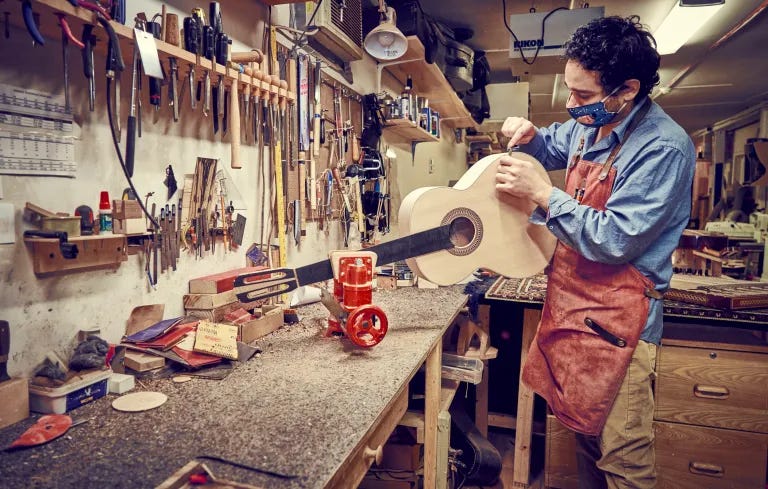
John: Here I’m focusing on instrument making and teaching those skills to others. My main business has been making Spanish guitars, but I also make cuatros, violins, ouds and qanuns. I’m focused on finishing writing a book at the moment on instrument making, and I am also completing a video series on the same topic. After I finish those, my next project is to make a qanun that was recently commissioned. But I do enjoy teaching oud, so I may take on some oud students too.
Charles: You make so many different kinds of instruments! Violins, Spanish guitars, Puerto Rican cuatros, ouds, qanuns...
John: I also make ukuleles from time to time. Truth is, once you know how to make a violin, you can pretty much do all the other instruments too.
Charles: Are you making things to order or are you maintaining an inventory? How are you finding clients?
John: I learned something recently. I had been making a major business mistake for years. I had this beautiful display cabinet I made for all my guitars. It held six guitars in the bottom, six in the top. This made the shop look lush and beautiful, but some guitars sat in the display case for a long time. When I was leaving Beacon, I gave some of the guitars to Dan Garcia, a guitarist and teacher, and asked him to sell them for me. Within a couple months, he had sold some of them. Now I realize I should have been working with the teachers all along, and going forward, I'll be reaching out much more to teachers.
It took me 15 years to learn that. Also, in the past, I was not good about attending my clients’ recitals. Now I realize that is important. I've already met a couple of musicians in the area and I'm going to be going out more and being more active, including putting on concerts here in town. We're going to be working on setting up a community of musicians, and we think the area is well-suited to that. But to answer your question, I always like to have stock so that if people come they can at least try something. I have been to luthier shops in the past, and some had no instruments to try. I think that is a mistake. But, of course, I also make instruments to order.
Charles: How are you connecting with people to sell instruments? Is it just word of mouth? Do they contact you? What's the process?
John: There's only a few of us in the world, and we are well known to prospective clients. People find you through Facebook. They contact you for a repair or if they're interested in an instrument. You get to know who the players are very quickly, and they get to know you.
Charles: Let’s go back a little bit to your first experiences with music? What was the first thing that you did musically?
John: Anyone who knows me knows I come from a bit of a different background from most luthiers. I was born in a slum in the South Bronx and I grew up with Latin music. My birth year coincides with the invention of rap music in 1981. I believe it was invented in the Bronx, near the place I come from. I grew up with a lot of salsa and traditional Puerto Rican music, as well as rap, hip hop, R&B – those were the kinds of music that were popular. The first experience with music I remember was watching a performance on TV. It was Bruce Springsteen’s song, Born in the USA. I just remember his image and how exciting he was. I was very young, maybe only four or five years old.
Then I got to first grade and we had music class where an older lady was playing old, boring music. I said, hey, this is not what I thought music was. I was expecting to rock out with Bruce Springsteen. For a time, school kind of ruined my enjoyment of music until I got a little bit older and discovered the guitar.
That occurred when I was in Middle school. At that time I lived with another family, which had taken me in during a time of crisis. Lou, the man that lived there, played guitar. He kept his guitar next to where I slept. Late one summer night everyone was sleeping. I had this beautiful guitar staring right at me. It was pulling me toward it like a magnet. I picked it up and by ear I tried to figure out how to play my favorite Nirvana song. After about 10 minutes, I put it back the way it was, in fear of getting in trouble for touching the guitar. The very next morning during breakfast Lou said to me, “we heard you playing guitar last night..”, I gasped because I thought I was in trouble, he continued. “You sounded good, I’m going to show you a few chords”. He even bought me my first electric guitar. Soon after I was able to play my favorite heavy metal songs, which was the music I was interested in at the time. I still am. And when I played music I found that everyone wanted to be my friend. I figured, this is too good to give up. I'm making friends. Everyone likes me. I would go to a party and play all their favorite songs and everyone would huddle around me.
But at the same time, I was also interested in building things. There was a shop class in my junior high. There was a bandsaw and a sanding machine, all the things that I use now daily as a luthier. The shop class blew my mind. I was amazed at all the things that I could build out of wood. I made a mini guillotine, with a weight, and the blade would drop and cut a cigar, or your finger, if you’re not careful. So, I had an aptitude and an interest.
One day, when I was 19 years old, I was at a lesson with Juan Gomez, a Flamenco Guitar Master. He had just come back from Spain. He had this beautiful Spanish guitar, with cypress side and back, very aromatic. That instrument was gorgeous. I looked at that guitar and I said, ah! – music and woodworking together! I’m going to make musical instruments!
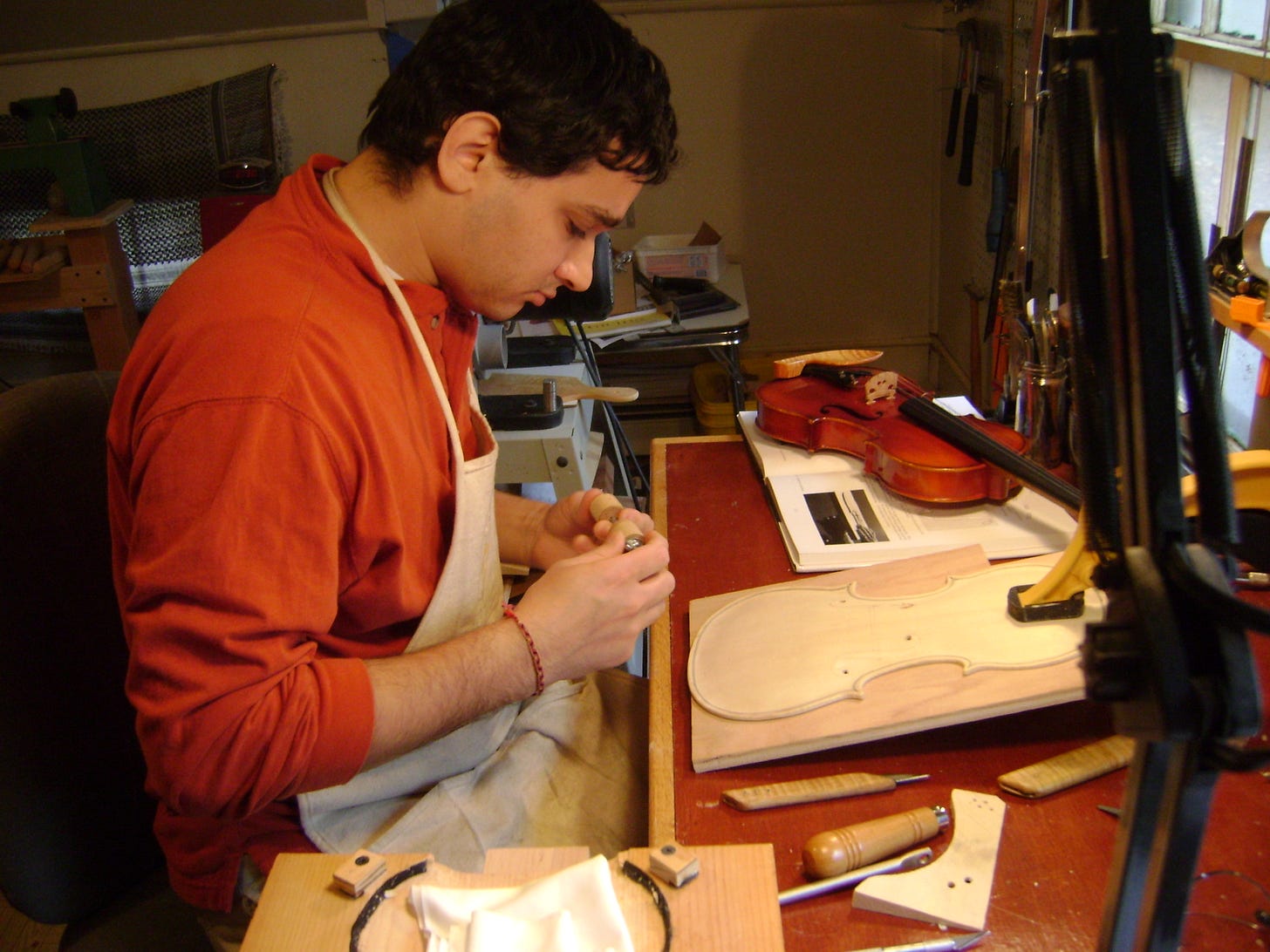
So at age 19, it was very clear in my mind what my path was going to be. But being a kid from the Bronx, you don't have access to many things, like a workshop, teachers or wood. But I was receiving at the time the Stu McDonald catalogs. I’d just look at the wood and daydream. I bought Irving Sloan's book on classical guitar making, which I think inspired a whole generation of luthiers. I was eager to learn, but I didn't have an outlet. And that's actually why later on I came up with the idea of teaching. I said, wait a minute, I was that young guy who couldn't find anybody to teach me.
No one wanted to teach me guitar making. The two guitar makers I found weren't teaching or taking on apprentices. Eventually, I found a German violin maker, Joseph Regh, who took me on as his apprentice. And that's how I started making instruments. By the way, he's a wonderful man. He still impresses me. He's really sharp. At the time I was working at IBM and he was retired from IBM. Joe was a key member of the research and development team at IBM, the people who pretty much invented the computer chip. He came out of a physics background. He’s still a violin maker, and one of the best bow makers in the world.
Charles: How long have you been teaching instrument making?
John: Until recently, I avoided teaching because I was so busy with other things. It took me a while to be able to get set up for teaching, and I’ve only done it for a few years. It's tough to format a course teaching someone how to make a guitar – something that usually takes about a month – into two weeks of instruction, but I was able to figure it out. It's wonderful to see somebody who starts with a desire and passion and then you see them doing it professionally or even continuing as a hobby. My next student is booked to arrive in August. I hope the garage and apartment are ready by then!
In addition to the basic course, I also offer a mastery course, which is taken over a long period. It's about 350 hours of instruction.
The people that come to me usually have already tried to make an instrument, but realized they needed help. I've also taught a couple of people that haven't had any woodworking experience, who only started making instruments after the class.
Before taking a student on, I do a Zoom call with them. I want to see who they are, what they want out of the class, and if they're physically capable of standing for eight hours a day to do the work. One gentleman was serious about taking the course but he had problems with his legs. He was an older guy who wanted to retire and make instruments. I figured out how to make it work for him.
Charles: You mentioned your time at IBM. I know from prior chats that you used your technological training at IBM to program the production of some things you use for instrument making, like, for example, some of the rosettes you make for ouds. Could you talk a little bit about how you came to combine the new and ancient techniques?
John: Not to be crude, but today time is money. We have new technologies like laser cutting. And we have 3D printers, like the one I have here beside me. They're invaluable for making certain parts, fabricating things like rosettes. Now, I still can make them by hand, but that's quite expensive. Of course, making one by hand is rare and special. Machines can't do that. But I can use computer programs to make beautiful rosettes from PLA (30% wood), which are 3D printed. Hell, I’ve even used the 3D printer to make parts for my motorcycle! You can make any design. So, yes, the tech background has been very useful.
Also, I was working at IBM on the equipment that made the computer chips. And that was a very important experience for me, but for a different reason. It taught me discipline. You have these machines that are worth millions of dollars. And there's one little ceramic screw in the machine. It has to go in the right way. And if it doesn't, it breaks. And then the machine is down. If you have a seven million dollar machine that's down, your boss at IBM hammers you. They never fire you for it, by the way, but they know how to make you feel bad for causing a costly delay.
At IBM, they taught us to get it right the first time. And although I didn't care for some aspects of that atmosphere – wearing a clean room suit is quite uncomfortable, and the long shifts of 12.5 hours were intense. But it was a very good experience for me. I took a lot of what I learned from there and the analytical aspect fostered and cultivated there. And I mixed it with my creative abilities.
You meet some people who are so creative and there's no analytical ability. If you look at someone like Leonardo DaVinci, he was a great artist, and he was a great engineer. He could imagine an idea and then execute it as an engineer. That made him very powerful.
Charles: I was just at a Musical Instrument Museum in Phoenix, Arizona, surrounded by all that amazing engineering of different instruments.
John: I've never been there, but I know one of their most famous instruments is one of Simon Shaheen’s ouds. It's gorgeous.
Charles: The oud was the most common instrument I saw across all the countries’ exhibits in the museum.
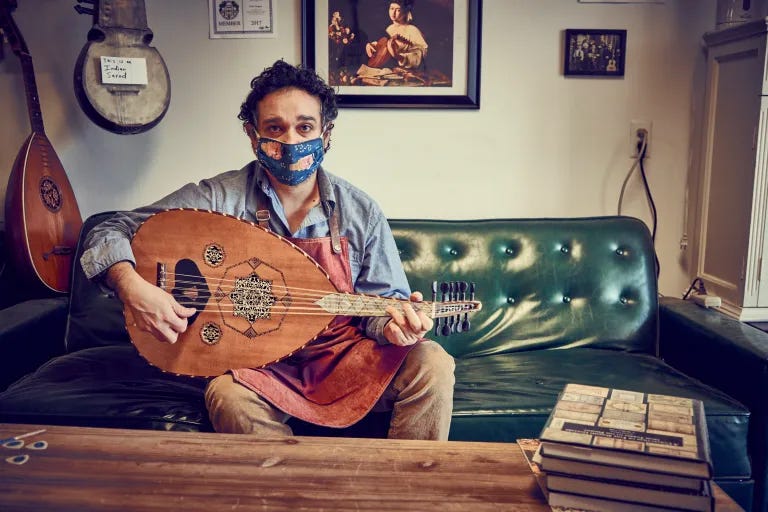
John: I try to tell people it's played everywhere from, you know, Morocco all the way to Iran, and beyond.
Charles: Seeing you here, on your own in North Carolina, makes me think of the special exhibit on Strativarius and Cremona, Italy at the Musical Instrument Museum. I guess location-specific learning about instrument making is not so important nowadays given how we communicate and travel, which makes it possible for you to be here, and yet connected to others all over the world.
John: Well, we’re lucky to have the internet and the information age, where you have everything at your fingertips. There's so much information out there. By the way, there's a lot of bad information too, but I can also make use of it.
For example, if you're working on making an instrument and – because you do so many repairs – you see something done repeatedly wrong by the same maker, you make a note not to do that. You also see what that maker gets right, and you can incorporate that. Repair work is a great way to gather information about making instruments.
I’m always refining my process. That never ends. If you talk to any luthier, they're always honing their methodology. The way they did something a couple of years ago is not necessarily how they do it today. I have luthier friends. We talk and we share. We don’t keep secrets. Everything is out there. We're active practitioners sharing advice to help each other hone and refine our processes. When we do that, we just get better and better.
Charles: Let’s talk a little bit about how the oud came into your life. You play the oud, you teach the oud, and you make ouds and teach people how to make them. How did a Puerto Rican get into ouds?
John: It turns out that the Puerto Rican cuatro is tuned in fourths like the oud, and there are a lot of aspects of traditional Puerto Rican music that are similar to Arabic music. A lot of harmonic minor, for example. Both Arabic and Puerto Rican music traditions rely a lot on improvisation, ornamentation. But there are differences, rhythm-wise, of course.
When I set out to play the oud, I realized it was part of a different culture, and I didn't want to make a mockery of it; I wanted to sound authentic and play it the right way. I think it's very important to do that.
How did I discover Middle Eastern music? When I was 19 I worked at Tower Records. I had access to all of this music, and I loved to hang out in the jazz room. This was in Yonkers, New York, on Central Avenue. And the jazz room included jazz, classical, world music and Latin music. I preferred to be in there; it was quieter than the main, rock room. I was happy in there. I was learning about classical music. I was buying Bach, and I was buying just about everything. I got good discounts and I would also get promos.
So, as part of that experience, I was also buying world music CDs, including oud music, and just eating it up. I was completely captivated by it. It's such a cool sound. It's so earthy. Ten years after that, I quit my job at IBM and I said, that’s not for me, no más. I decided to go to Lebanon to study oud playing.
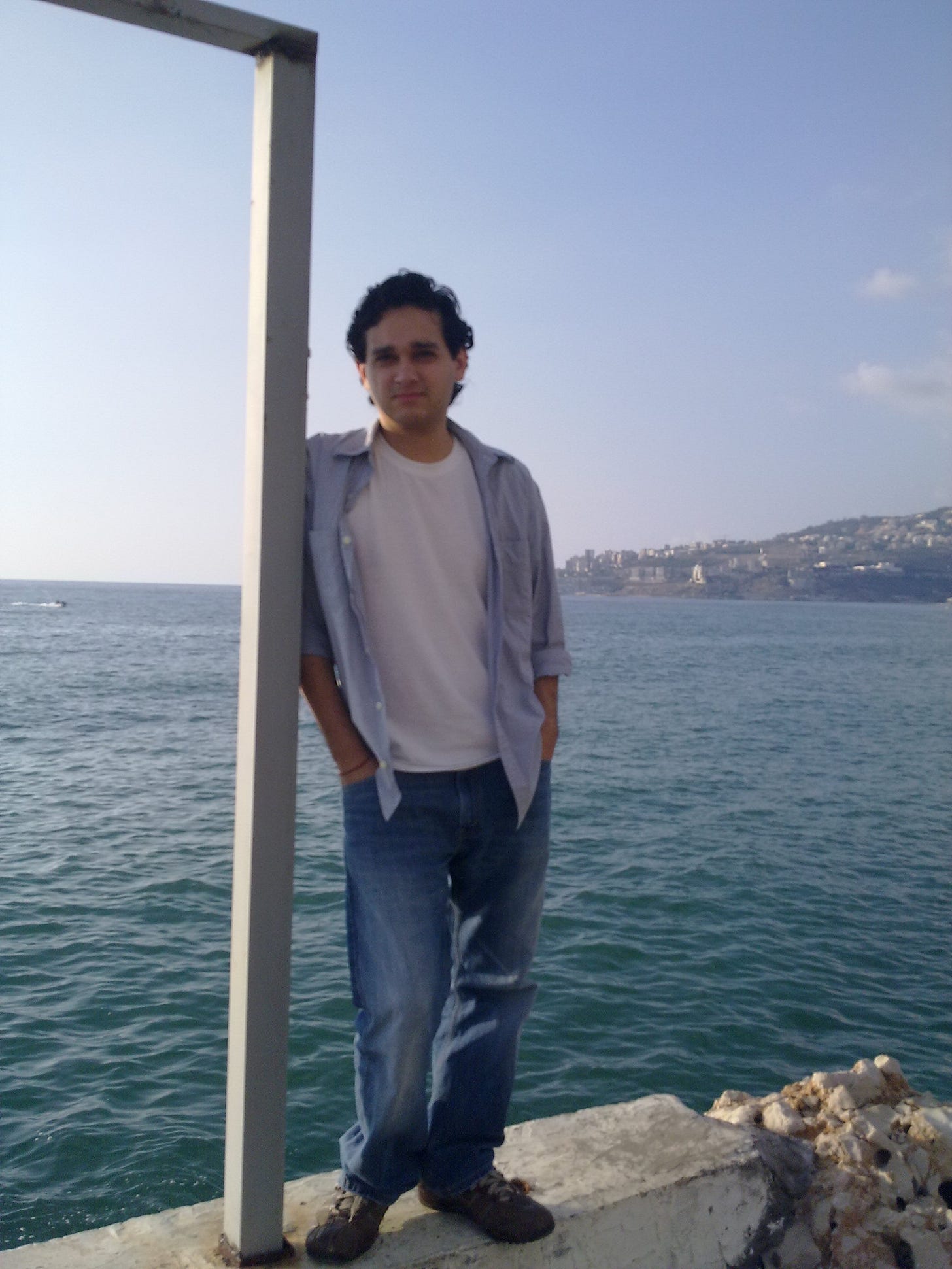
I lived in Jounieh, which is 35 minutes north of Beirut. It's the Christian area on the coast, and the mountains are very beautiful. I studied with two great teachers, and I also studied solfege, which I'm very thankful for... I think every musician should study solfege.
When I came back from Lebanon I decided to begin instrument making as a career. I just took out my tools again and started making and fixing instruments.
I started off mainly doing repairs. Over time, the business grew. I was so lucky because when you look back, full circle, I'm just a kid from the Bronx slums. We lived in the projects initially, and it was a rough upbringing. When you come from that, you almost never think you'll have anything good in life. But I did.
Charles: Where did you get the confidence to believe you could teach yourself how to do whatever came into your head?
John: I always had self-confidence and believed that if I set my mind to something, I could do it. Luckily, there was enough aptitude to achieve some of the things that I set out to do. Marcus Aurelius said, “If someone else has done it, then it is humanly possible, and therefore possible for you.” I truly believe that.
Charles: Did you have an example, as a kid, of somebody who was like that?
John: No, I can't say that there were any role models in my life. It was just a fire inside me.
Charles: You talked before a little bit about the business side of instrument making. Could you give some more advice to somebody who's thinking about getting into this business?
John: I've met luthiers who make instruments to a very high level, but are not able to make any money. One thing I learned in the beginning: make it easy for your clients to pay. Try to accept all the different kinds of payments. Also, you have to charge the right price. And you have to realize that musicians are finicky, and sometimes they hear things. You have to be patient with them. There's something called psychoacoustics, or psychological acoustics. One day they love their instrument and the next day they don't. And it all falls on you.
Charles: Could you explain that?
John: Psychoacoustics? It's a phenomenon you may have experienced. I have. You wake up, you play your instrument, and you're on cloud nine. Nothing can stop you. The next day you wake up and, oh, not so much. It could be psychological. It could also be humidity. Instruments sometimes actually do sound better or worse because of changes in humidity. And every instrument is different. Every piece of wood is different. But for the most part, in my experience, it is psychological.
Here's an example. A friend of mine is a violinist, he was complaining about the sound of his instrument. I told him I could try moving the sound post inside. If you move it around, you can change the sound. It's on the inside of the violin. It sits right underneath the back foot of the bridge on the treble side. And it has to be wedged perfectly. It can't be in at an angle either way. And it needs to be fit to the shape of the top belly and the bottom belly of each violin. It sometimes requires adjusting. It's very common to adjust the sound post, especially going from a humid season to a dry season. In New York weather, the sound post will move frequently, especially if you're playing it a lot, and even if you don't play a lot. And if the sound post falls, you’d better take the tension off the strings, because you’re in jeopardy of having a huge crack on the top of your violin, which is very expensive to fix.
So my friend brings me his violin, and I say, OK, I'm going to move the sound post. I take a tool in my hand, I go inside the sound hole, and I start making a grunting noise to make it seem that I’m really doing something. Then I told him I adjusted it. Actually, I didn't do anything. I didn't move the sound post. I didn't even touch it. I handed the violin back to him.
He plays it, and says, “Oh, this is amazing! You’re a genius!” No, A-hole, I didn't move it at all! And he says, “No, you did something.” I tell him again that I didn't do anything. I was trying to prove something to him about psychoacoustics.
Charles: Going back to the book you’re working on, and your video course, what made you decide to produce those?
John: Oh, I wanted to get the information out to everyone. To share the knowledge and spread it. I see it as a duty. I've been a member of the American Luthier's Guild for quite a while. I have bought every publication they produced going back to 1981. I just want to know everything. I want to absorb everything. As I told you, even the bad information. And to go back to that point, when I look at the older publications in American Luthier's Guild from the early 80s and early 90s, we now know not to do certain things a certain way. Back then, they were saying: I do it like this, but now we know not to do that. I just like to see all the information. And I feel a strong need to share that information. There's already one book on oud making, but I think I can make a significant contribution. I'm going to have a lot of quality photographs in there, showing how to make mosaic inlays, cut rosettes. That doesn't exist in the other book.
Charles: Is the video course going to use the book or be an alternative to the book?
John: They're independent. Some people learn visually. Some people like things to be written down. I like both. I like to read about something and also I like to see it. Additionally, some people cannot afford the two-week course, or to travel to take the course. The video is helpful for them. By the way, we do have scholarships available for people who can't afford the course.
Charles: Are there non-profits or foundations that offer scholarships for this?
John: Yes, and we have a non-profit for this purpose. We're going to be putting on concerts and getting more awareness for this non-profit, which we call the Heritage Soundcraft Institute.
We also want to get high quality instruments into the hands of young, talented players who can't afford those instruments. They can also apply for funding. That's something that's very important to me.
Charles: John, thanks so much for taking the time to share all that with us. Best of luck on the book, the video series, and your new life in North Carolina
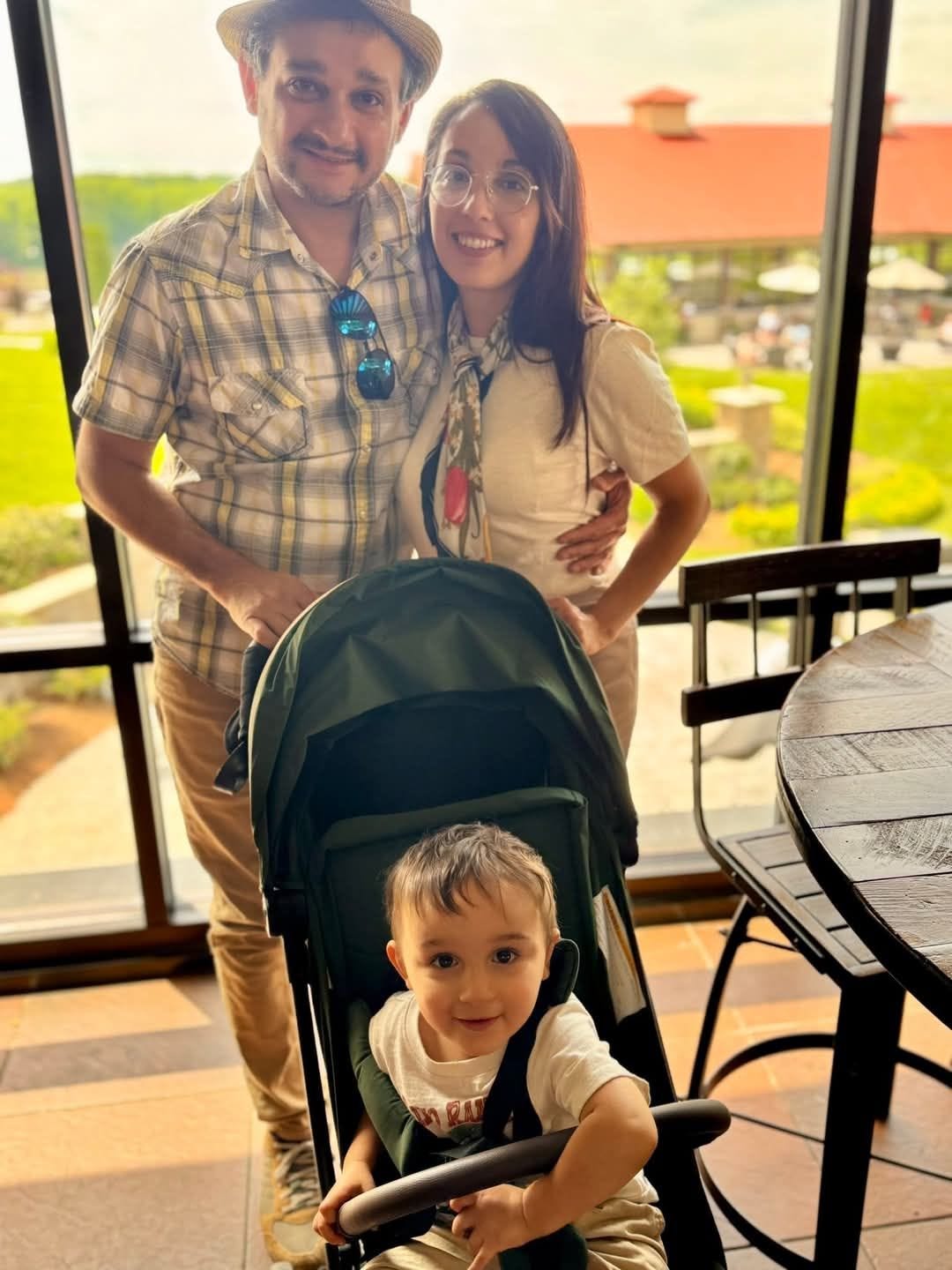
.
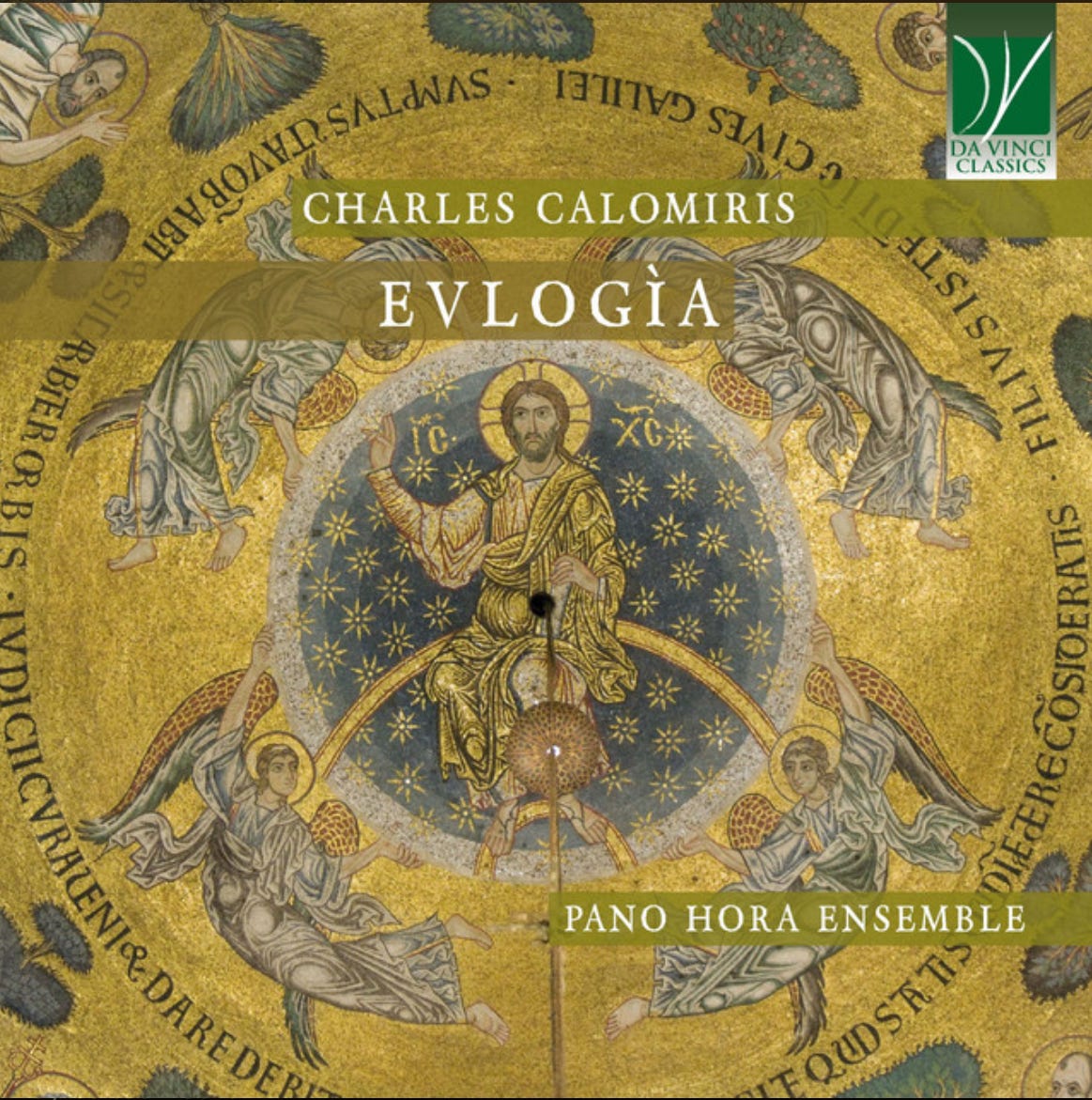


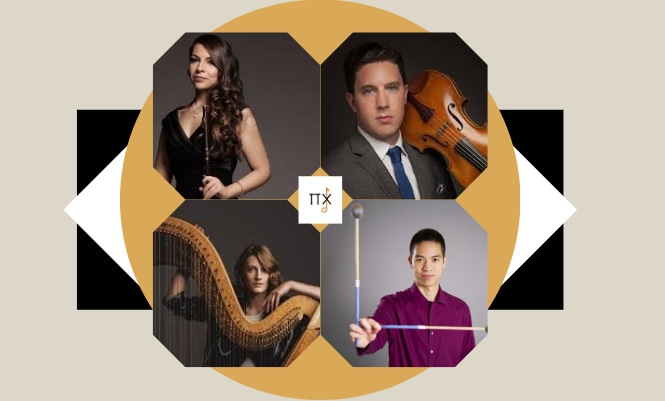
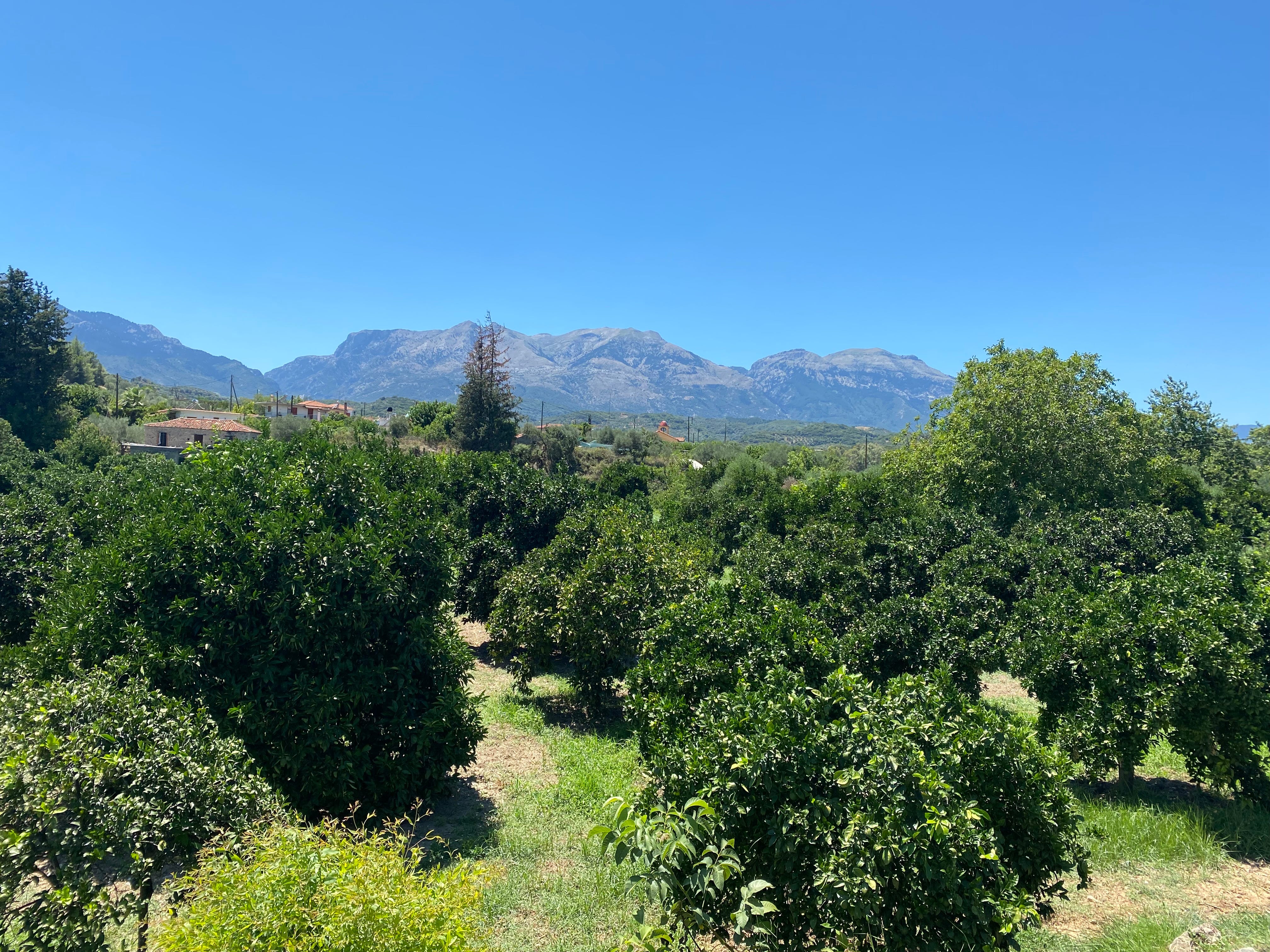

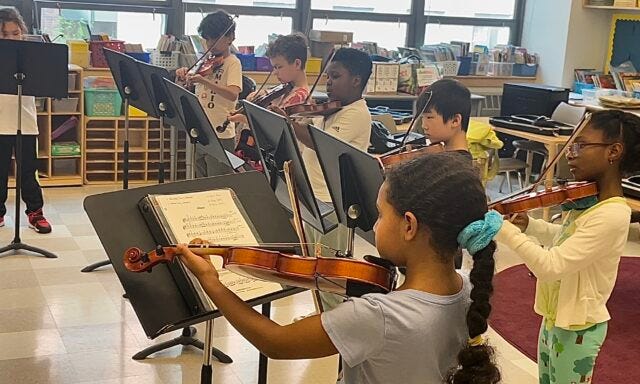
.avif)
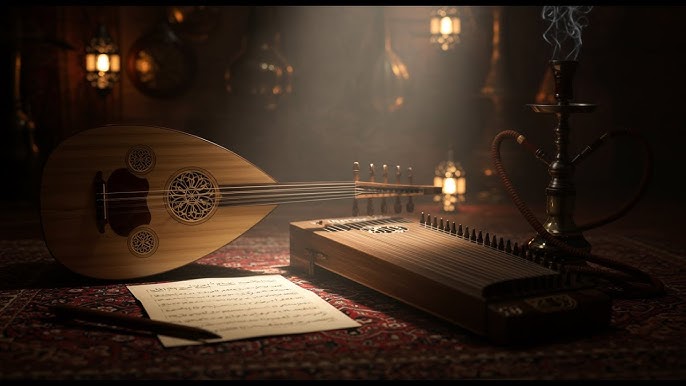

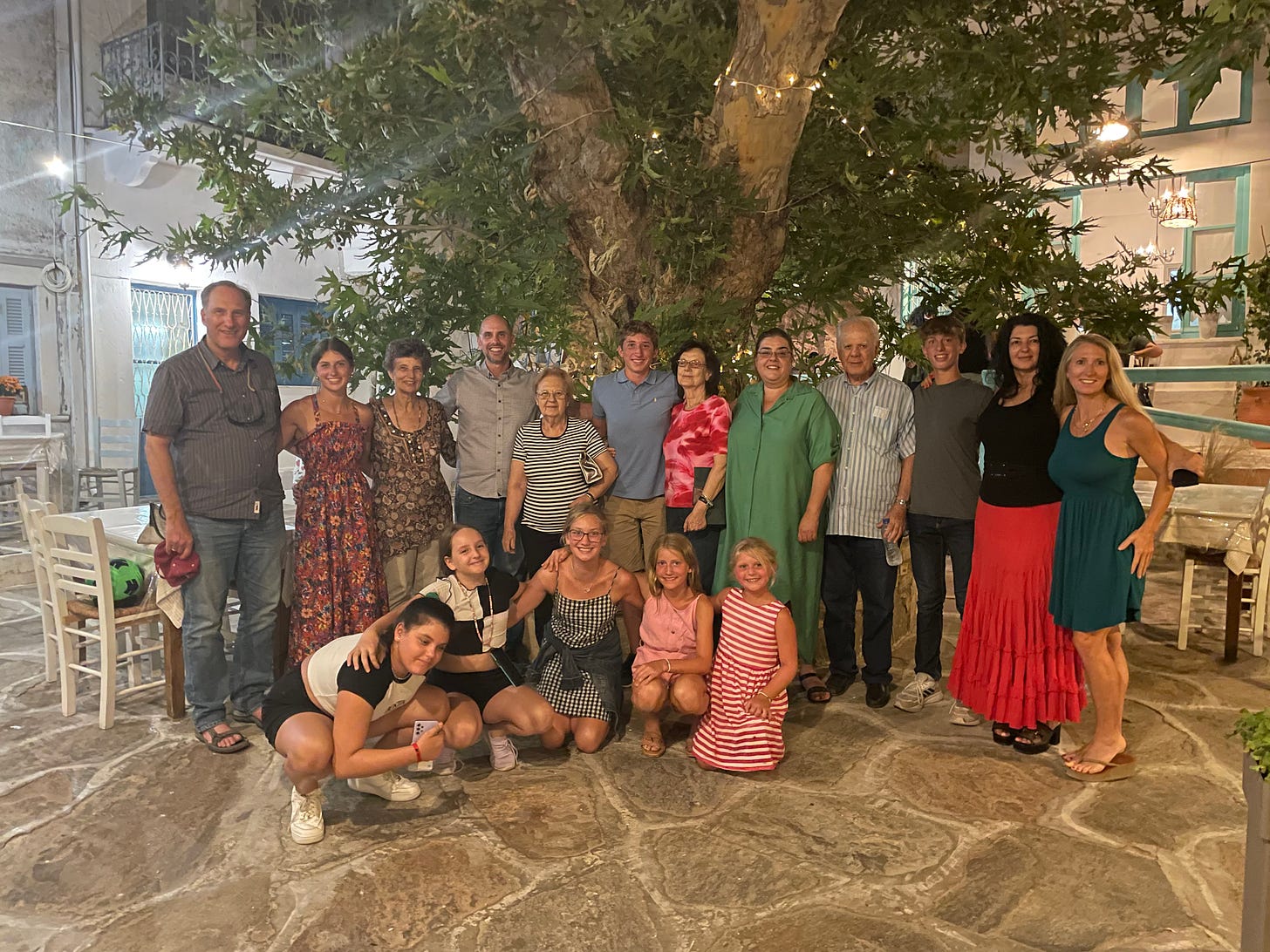
.png)

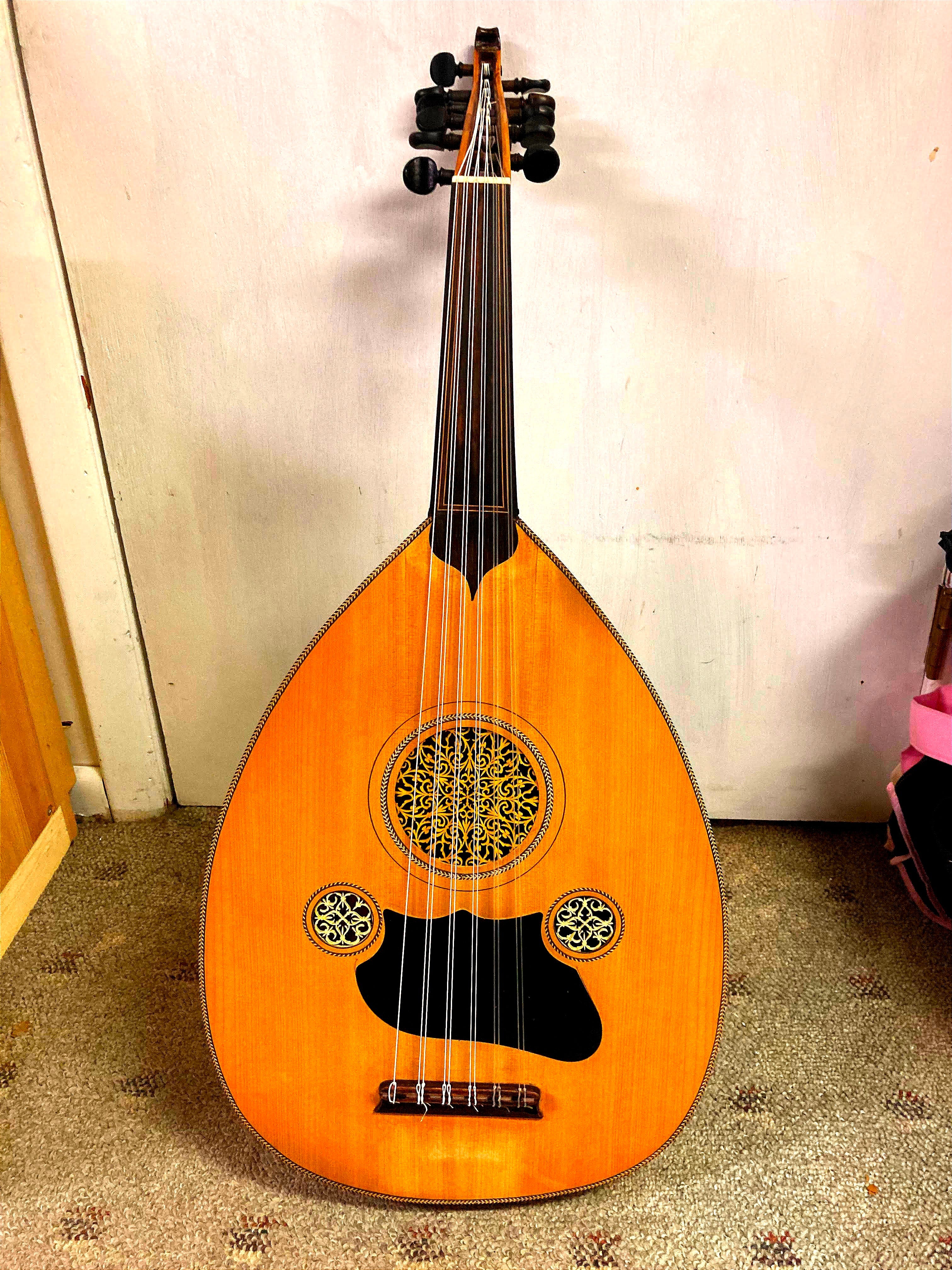
.png)


.png)


.png)




.jpg)
